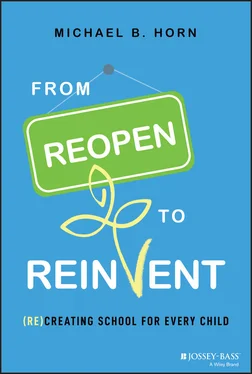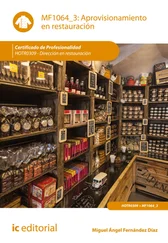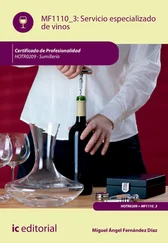Michael B. Horn - From Reopen to Reinvent
Здесь есть возможность читать онлайн «Michael B. Horn - From Reopen to Reinvent» — ознакомительный отрывок электронной книги совершенно бесплатно, а после прочтения отрывка купить полную версию. В некоторых случаях можно слушать аудио, скачать через торрент в формате fb2 и присутствует краткое содержание. Жанр: unrecognised, на английском языке. Описание произведения, (предисловие) а так же отзывы посетителей доступны на портале библиотеки ЛибКат.
- Название:From Reopen to Reinvent
- Автор:
- Жанр:
- Год:неизвестен
- ISBN:нет данных
- Рейтинг книги:4 / 5. Голосов: 1
-
Избранное:Добавить в избранное
- Отзывы:
-
Ваша оценка:
- 80
- 1
- 2
- 3
- 4
- 5
From Reopen to Reinvent: краткое содержание, описание и аннотация
Предлагаем к чтению аннотацию, описание, краткое содержание или предисловие (зависит от того, что написал сам автор книги «From Reopen to Reinvent»). Если вы не нашли необходимую информацию о книге — напишите в комментариях, мы постараемся отыскать её.
From Reopen to Reinvent,
From Reopen to Reinvent
From Reopen to Reinvent
From Reopen to Reinvent — читать онлайн ознакомительный отрывок
Ниже представлен текст книги, разбитый по страницам. Система сохранения места последней прочитанной страницы, позволяет с удобством читать онлайн бесплатно книгу «From Reopen to Reinvent», без необходимости каждый раз заново искать на чём Вы остановились. Поставьте закладку, и сможете в любой момент перейти на страницу, на которой закончили чтение.
Интервал:
Закладка:
With a separate organization in place, the University was able to change everything about its online division. The team first noticed that the students who were enrolling in the online programs were different from those coming to the on-ground ones. In the latter case, they were typically high school graduates looking to take the next logical step in their educational journey. In contrast, the students coming to the online programs were typically adults in the working world looking to step it up in their careers. They had had all the life experience they could handle, as LeBlanc said, and what they wanted was the most efficient pathway to gain new skills. To serve both groups well necessitated very different sets of processes.
For example, for the 18-year-old students it served, SNHU would inform them about general, basic financial aid information during their junior year of high school. Not having specifics for at least a year worked fine for both the student and the University. Any student inquiry would take weeks to resolve because there was no urgency on either side.
But for older students who had an urgency in their lives to step it up, they needed answers on financial aid right away. Their time to act was now or never. Waiting hours, let alone weeks, to respond was too late.
What had to change at SNHU? “Pretty much everything,” LeBlanc told the authors of the book Competing Against Luck . 10 He gave the online team the ability to rethink not just SNHU's resources and processes, as in the Toyota example, but also the organization's priorities, which resulted in innovations that dramatically departed from the status quo at SNHU.
Prospective students needed quick responses to inquiries about financial aid. They also needed to know within days whether previous college courses would count as credit toward an SNHU degree. And they needed to know quickly after applying whether they were admitted—otherwise they would look somewhere else. The months-long admissions process that was routine for high school students wouldn't work online.
SNHU realized that it was not enough just to enroll students; it had to support them to and through graduation. That meant focusing on the emotional and social dimensions around a student's journey. SNHU's online school began assigning students a personal advisor, for example, who would stay in constant contact with students and pick up on red flags, in many cases even before students would.
This also changed how SNHU measured success at each step of the student journey. For example, SNHU would have formerly measured how it responded to student inquiries in terms of how many packages were mailed out. It would then wait for the interested students to call. But now SNHU Online's goal was to call a prospective student back in under 10 minutes.
The move to give the online division autonomy allowed it to see online learning not just as something to try and stave off an existential threat, but as a great opportunity for SNHU to serve the millions of working adults from around the world who need more education to improve their lives.
The team seized that opportunity. From serving roughly 500 online students in 2010, SNHU grew to serve roughly 17,000 students in 2012, 35,000 students by 2014, 60,000 in 2016, and over 130,000 by 2018. What's more, the success also helped the brick-and-mortar campus grow from roughly 2,500 students in 2010 to 3,913 students in 2018. 11
When COVID hit, LeBlanc decided to seize the pandemic as both a threat and an opportunity. The threat to traditional brick-and-mortar campuses was clear. LeBlanc intended to use that threat as an opportunity to reinvent the collegiate brick-and-mortar experience, which in his view had been flailing for years and was increasingly out of reach and unsustainable from a financial perspective for both students and the colleges themselves.
The team at SNHU had long been convinced that there must be a way to reinvent the campus experience. The goal was still to allow students to enjoy the coming-of-age experiences that college is so good at providing, but also to leverage online, competency-based learning—in which, as explained in the Introduction, students would progress based on mastery of the material, not seat time—to create a more robust learning experience. In so doing, LeBlanc also wanted to dramatically lower the sticker price of college, a stop sign for so many who question whether college is right for them. 12 COVID allowed SNHU to accelerate and inject urgency into planning that had been underway for some time.
In April 2020, SNHU announced that all of its incoming freshmen would receive a one-time “Innovation Scholarship” that would cover their full first-year tuition. In turn, the freshmen would take all their courses online while living on campus (assuming it was open during COVID) and participating in college activities.
After the first year, SNHU's plan was to relaunch its brick-and-mortar program with a $10,000 per year price tag—a 61 percent reduction from its previous rate of $31,000 per year—and offer a program that mixed in-person with online, competency-based learning. The free first year would give faculty the opportunity to develop and test the program before relaunching the brick-and-mortar campus experience. It reopened ultimately with programs offered at two price points: one at $10,000 per year with a significant component of project-based learning and a second price point of $15,000 per year that would offer more traditional in-person instruction. 13
To accomplish this, LeBlanc said that they pulled people from their day jobs and assigned them to the campus transformation team. The team was led by one of their deans, who was released on an interim basis from his previous responsibilities. SNHU also took its dean of students and placed her on the team full-time—and replaced her role on an interim basis. From there, SNHU added three project managers. All the roles were full-time so that the individuals could concentrate completely on the new experience, although LeBlanc recognized that some members of the team might transition ultimately back to their old jobs or to new assignments once SNHU entered full implementation mode.
The autonomy was critical so that the individuals would have the time, space, and freedom to design the new offerings—and not be weighed down with simultaneously balancing the demands of their prior jobs, which would always present themselves as more urgent and pressing given the day-to-day needs of existing students, faculty, and staff.
The pattern is straightforward. A threat galvanizes resources, but a leader must not stay in that framing. Creating an independent team to take on the threat enables the organization to reframe it as an opportunity. That allows the organization to escape a top-down, command-and-control response and reinvent the experience.
Southern New Hampshire University:
https://www.youtube.com/watch?v=MxYZgmoeIuM
WHAT THIS COULD LOOK LIKE IN K–12 SCHOOLS
When talking to K–12 education leaders, this framework can feel overwhelming and even impossible. How could administrators possibly grant the required autonomy short of forming a wholly new school? That's what the Hawken School, a prestigious private school near Cleveland, did, for example, to pioneer mastery-based learning. It created a school called the Mastery School of Hawken. And it's what another prestigious private school, Lakeside School in Seattle, did to launch a new microschool, the Downtown School, at a significantly lower price point.
Is this strategy out of reach then for public schools?
No.
In K–12 schools, an autonomous team could take many forms. A superintendent could free a group of educators in a district from their day-to-day roles and task them with reimagining what they might offer. This group might function as a separate team within a school and pioneer either a new classroom model or a novel way of offering a particular subject or grade. The independent group could also exist as a school within a school, a microschool, or a learning pod. It could also create a new school entirely.
Читать дальшеИнтервал:
Закладка:
Похожие книги на «From Reopen to Reinvent»
Представляем Вашему вниманию похожие книги на «From Reopen to Reinvent» списком для выбора. Мы отобрали схожую по названию и смыслу литературу в надежде предоставить читателям больше вариантов отыскать новые, интересные, ещё непрочитанные произведения.
Обсуждение, отзывы о книге «From Reopen to Reinvent» и просто собственные мнения читателей. Оставьте ваши комментарии, напишите, что Вы думаете о произведении, его смысле или главных героях. Укажите что конкретно понравилось, а что нет, и почему Вы так считаете.












